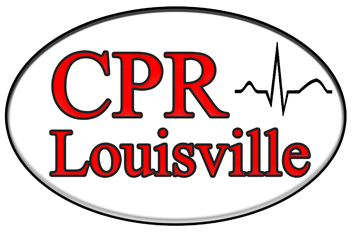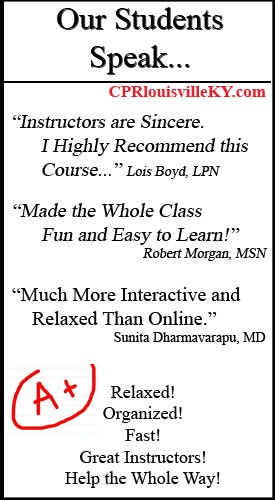I. Introduction
In the world of sports, the thrill of competition often overshadows the potential risks athletes face. However, the reality is that life-threatening situations can occur on the field, court, or track at any moment. Cardiac emergencies, in particular, pose a significant threat to athletes of all levels. This is where the critical importance of Cardiopulmonary Resuscitation (CPR) in sports comes into play.
CPR is a life-saving technique that can mean the difference between life and death in cases of sudden cardiac arrest. While general CPR knowledge is invaluable, the unique environments and challenges presented by different sports necessitate a more tailored approach. This is where sport-specific CPR protocols become essential.
The need for sport-specific protocols arises from the varied circumstances in which athletes may require emergency care. From contact sports with a high risk of impact injuries to endurance events where environmental factors play a crucial role, each sporting context presents its own set of challenges for first responders and medical personnel.
II. General CPR Overview
Before delving into sport-specific protocols, it’s crucial to understand the basics of CPR. The fundamental steps of CPR remain consistent across all situations:
- Check for responsiveness
- Call for help or activate the emergency response system
- Check for breathing
- Begin chest compressions
- Provide rescue breaths (if trained)
- Continue CPR until professional help arrives or the person shows signs of life
These steps form the foundation of the “Chain of Survival,” a series of actions that, when performed quickly and effectively, give a person the best chance of surviving cardiac arrest.
It’s important to note that there are differences between adult and pediatric CPR:
- Adult CPR (for individuals past puberty):
- Use the heel of one hand with the other hand on top for chest compressions
- Compress the chest at least 2 inches deep
- Perform compressions at a rate of 100-120 per minute
- Pediatric CPR (for children from 1 year to puberty):
- Use one or two hands for chest compressions, depending on the child’s size
- Compress the chest about 2 inches deep
- Perform compressions at a rate of 100-120 per minute
- Infant CPR (for infants under 1 year):
- Use two fingers for chest compressions
- Compress the chest about 1.5 inches deep
- Perform compressions at a rate of 100-120 per minute
Understanding these general principles is crucial for anyone involved in sports, from coaches to players. However, the application of these techniques in specific sporting environments requires additional considerations, which we will explore in the following sections.
III. Sport-Specific Considerations
While the fundamental principles of CPR remain consistent, the application of these life-saving techniques in sports settings requires additional considerations. These factors can significantly impact the effectiveness of CPR and the overall emergency response.
A. Environmental Factors
Different sports are played in diverse environments, each presenting unique challenges for CPR administration:
- Temperature Extremes:
- Hot environments (e.g., summer outdoor sports) can lead to heat exhaustion or heat stroke, complicating cardiac emergencies.
- Cold environments (e.g., winter sports) may require responders to remove bulky clothing quickly and deal with hypothermia.
- Terrain:
- Uneven or slippery surfaces (e.g., ski slopes, and ice rinks) can make it difficult to perform proper chest compressions.
- Water environments (e.g., swimming, and surfing) require specialized techniques for patient extraction and CPR initiation.
- Altitude:
- High-altitude sports may require adjustments to CPR techniques due to lower oxygen levels.
- Accessibility:
- Some sports venues may have limited access for emergency responders, necessitating prolonged on-site care.
B. Types of Injuries Common in Sports
Different sports are associated with specific injury patterns that can influence CPR protocols:
- Impact Injuries:
- Contact sports like football, rugby, or hockey have a higher risk of traumatic injuries that may complicate CPR.
- Responders must be prepared to deal with potential spinal injuries while initiating CPR.
- Commotio Cordis:
- This rare but life-threatening condition, caused by a blunt impact to the chest, is more common in sports involving projectiles (e.g., baseball, cricket).
- Immediate recognition and rapid CPR initiation are crucial for survival.
- Drowning:
- Water sports require specific rescue and resuscitation techniques.
- CPR protocols may need to be modified to account for water in the lungs.
- Exertional Injuries:
- Endurance sports can lead to conditions like exertional heat stroke or hyponatremia, which may present similarly to cardiac arrest.
- Proper assessment and treatment of underlying conditions are crucial.
- Equipment-Related Considerations:
- Some sports involve protective gear (e.g., helmets, pads) that may need to be removed quickly and safely before initiating CPR.
- Familiarity with sport-specific equipment is essential for rapid response.
Understanding these sport-specific considerations is crucial for developing effective CPR protocols tailored to each sporting environment. In the next section, we’ll explore how these factors influence CPR protocols for individual sports, providing a more detailed look at the unique challenges and solutions in different athletic contexts.
IV. CPR Protocols for Individual Sports
While the core principles of CPR remain constant, the application of these techniques must be adapted to the unique challenges presented by different sports. Let’s examine how CPR protocols can be tailored for specific sporting categories:
A. Contact Sports (e.g., Football, Rugby)
- Rapid Assessment:
- Quick removal of protective gear (helmets, shoulder pads) while maintaining spinal alignment.
- Use of specialized techniques like the “log roll” to move the athlete while protecting the spine.
- CPR Modifications:
- Potential need for jaw-thrust maneuver instead of head-tilt/chin-lift if cervical spine injury is suspected.
- Importance of having multiple responders to assist with equipment removal and CPR administration.
- AED Use:
- Immediate access to Automated External Defibrillators (AEDs) on the sidelines.
- Training staff in rapid pad placement, potentially requiring chest hair removal or the use of specialized electrodes.
B. Water Sports (e.g., Swimming, Diving)
- Rescue Techniques:
- Training in water rescue and extraction methods.
- Emphasis on getting the athlete to a firm, dry surface as quickly as possible.
- CPR Adjustments:
- Initiating rescue breaths earlier due to the likelihood of respiratory arrest in drowning cases.
- Modifying chest compression technique if performed on an unstable surface (e.g., pool deck, boat).
- Post-Resuscitation Care:
- Attention to hypothermia management, especially in open water events.
- Monitoring for secondary drowning symptoms.
C. Endurance Sports (e.g., Marathon Running, Cycling)
- Environmental Considerations:
- Preparedness for extreme weather conditions (heat, cold, altitude).
- Mobile medical units equipped for rapid response along race routes.
- Specific Concerns:
- Awareness of exercise-associated hyponatremia, which can mimic cardiac arrest symptoms.
- Importance of proper hydration and electrolyte balance in treatment protocols.
- CPR Challenges:
- Potential need for prolonged CPR due to delayed access to advanced medical care in remote race locations.
- Use of mechanical CPR devices for consistent, high-quality compressions during transport.
D. Winter Sports (e.g., Skiing, Ice Hockey)
- Cold Weather Protocols:
- Rapid rewarming techniques alongside CPR.
- Awareness of how cold affects CPR effectiveness and AED function.
- Equipment Considerations:
- Quick removal techniques for skis, snowboards, and ice skates.
- Specialized CPR boards designed for use on ice or snow.
- Unique Challenges:
- Managing CPR on icy or sloped terrain.
- Dealing with bulky winter clothing during chest compression and AED use.
In each of these sporting categories, the key to effective CPR lies in combining standard life-saving techniques with sport-specific knowledge and preparation. This includes not only adapting the physical aspects of CPR but also ensuring that all staff and responders are trained in these specialized protocols.
V. Equipment and Preparedness
The effectiveness of sport-specific CPR protocols heavily relies on proper equipment and thorough preparedness. This section explores the essential tools and training requirements necessary for implementing these life-saving techniques in various sports settings.
A. Sport-Specific Medical Equipment
- Automated External Defibrillators (AEDs):
- Waterproof AEDs for water sports
- Portable, rugged AEDs for outdoor and endurance sports
- Multiple AEDs strategically placed in large venues
- Airway Management Tools:
- Pocket masks with one-way valves
- Bag-valve-mask (BVM) devices
- Suction units for clearing airways, especially crucial in water sports
- Spinal Immobilization Equipment:
- Backboards and cervical collars for contact sports
- Specialized extraction devices for motorsports
- Environmental Protection:
- Thermal blankets for hypothermia prevention in winter sports
- Cooling equipment for heat-related emergencies in outdoor sports
- Sport-Specific Rescue Tools:
- Rescue boards for water sports
- Ice rescue equipment for winter sports
- Hydraulic extraction tools for motorsports
- Oxygen Administration Equipment:
- Portable oxygen tanks and delivery systems
- Pulse oximeters for monitoring oxygen saturation
- Trauma Kits:
- Fully stocked first aid kits tailored to sport-specific injuries
- Tourniquets and hemostatic agents for severe bleeding control
B. Training Requirements for Sports Personnel
- Basic Life Support (BLS) Certification:
- Mandatory BLS training for all coaches, trainers, and key staff members
- Regular recertification to ensure skills remain current
- Sport-Specific CPR Training:
- Specialized courses focusing on the unique challenges of each sport
- Practical scenarios simulating real-life emergencies in sport-specific settings
- AED Training:
- Comprehensive training on AED use, including pad placement and operation
- Regular drills to ensure rapid AED deployment
- Emergency Action Plan (EAP) Training:
- Development and regular practice of sport-specific EAPs
- Clear delineation of roles and responsibilities during emergencies
- Environmental First Aid:
- Training on recognizing and treating heat illness and cold-related emergencies
- Altitude sickness management for high-altitude sports
- Psychological First Aid:
- Training to handle the psychological impact of emergencies on athletes, teammates, and spectators
- Regular Drills and Simulations:
- Conducting surprise emergency simulations to test readiness
- Post-drill debriefings to identify areas for improvement
- Cross-Training with Emergency Services:
- Joint training sessions with local EMS to improve coordination
- Familiarization of EMS personnel with sport-specific venues and potential challenges
- Injury Prevention Education:
- Training on recognizing early signs of potential cardiac issues in athletes
- Education on the proper use of protective equipment to prevent injuries
- Documentation and Reporting:
- Training on proper incident documentation for legal and improvement purposes
- Understanding of reporting requirements to relevant sports governing bodies
By ensuring that appropriate equipment is readily available and that all personnel are well-trained in sport-specific emergency response, sports organizations can significantly improve the chances of survival in the event of a cardiac emergency. This comprehensive approach to equipment and preparedness forms the backbone of effective sport-specific CPR protocols.
VI. Case Studies
Examining real-world incidents provides valuable insights into the effectiveness of sport-specific CPR protocols. These case studies highlight successful implementations and important lessons learned from past events.
A. Successful Implementations of Sport-Specific CPR
- Professional Football: Damar Hamlin Incident (2023)
- Situation: During an NFL game, Buffalo Bills player Damar Hamlin suffered a cardiac arrest after a tackle.
- Response: Immediate on-field CPR and AED use by well-trained medical staff.
- Outcome: Successful resuscitation and eventual recovery.
- Key Factors: Rapid response, availability of AED, well-rehearsed emergency action plan.
- Marathon Running: Boston Marathon (2014)
- Situation: A runner collapsed near the 25-mile mark due to sudden cardiac arrest.
- Response: Quick action by nearby medical volunteers with sport-specific training.
- Outcome: Successful resuscitation and full recovery.
- Key Factors: Strategically placed medical stations, endurance sport-specific CPR training.
- High School Basketball: Michigan High School Game (2020)
- Situation: A referee collapsed during a game due to a heart attack.
- Response: Immediate CPR by trained coaches and use of on-site AED.
- Outcome: Successful resuscitation and survival.
- Key Factors: Presence of AED in the school gymnasium, CPR-trained school staff.
These case studies underscore several critical points:
- The vital importance of immediate access to AEDs in all sporting environments.
- The life-saving impact of well-trained personnel who can quickly implement sport-specific CPR protocols.
- The necessity of regular, realistic emergency drills and comprehensive emergency action plans.
- A need for sports organizations to continuously review and improve their safety protocols based on past incidents.
- The importance of considering sport-specific environmental factors in emergency planning.
By learning from both successes and tragedies, sports organizations can continue to refine their approach to emergency cardiac care, ultimately improving athlete safety across all levels of competition.
VIII. Conclusion
A. Importance of Tailored CPR Protocols in Sports
The implementation of sport-specific CPR protocols is not just a matter of best practice—it’s a critical component of athlete safety and responsible sports management. Throughout this article, we’ve explored the unique challenges presented by various sporting environments and the specialized approaches required to address them effectively.
Key takeaways include:
- Customization is Crucial: Standard CPR techniques, while foundational, must be adapted to meet the specific demands of each sport. From dealing with protective equipment in contact sports to managing hypothermia risks in winter athletics, tailored approaches save lives.
- Environmental Awareness: Sports often take place in challenging environments. Understanding and preparing for these conditions—be it extreme temperatures, high altitudes, or water-based settings—is essential for effective emergency response.
- Equipment Readiness: Having the right tools, strategically placed and properly maintained, can make the difference between life and death. This includes sport-specific medical equipment and easily accessible AEDs.
- Comprehensive Training: Regular, specialized training for all personnel involved in sports events ensures that everyone is prepared to act swiftly and effectively in an emergency.
- Learning from Experience: As demonstrated by our case studies, both successes and tragedies offer valuable lessons. Continuous review and improvement of protocols based on real-world incidents is vital.
B. Call to Action for Increased Awareness and Training
The implementation of effective sport-specific CPR protocols requires a concerted effort from all stakeholders in the sporting community:
- Sports Organizations: Prioritize the development and regular updating of sport-specific emergency action plans. Invest in appropriate equipment and comprehensive training programs.
- Coaches and Staff: Commit to ongoing education and training in sport-specific CPR and emergency response. Participate actively in drills and simulations.
- Athletes: Familiarize yourself with the emergency procedures for your sport. Advocate for safety measures and participate in basic CPR training.
- Medical Professionals: Continue to research and develop best practices for sport-specific emergency care. Collaborate with sports organizations to enhance protocols.
- Policymakers: Support legislation that mandates AED availability and emergency response training in sporting venues at all levels.
- Spectators: Be aware of the potential for emergencies and know how to alert trained personnel quickly if needed.
By embracing these sport-specific CPR protocols and fostering a culture of preparedness, we can significantly reduce the risk of fatal outcomes from cardiac emergencies in sports. Every second counts in these situations, and having the right knowledge, tools, and procedures in place can mean the difference between tragedy and a life saved.
As we look to the future, ongoing research, technological advancements, and a commitment to continuous improvement will further enhance our ability to respond to cardiac emergencies in sports. The goal is clear: to ensure that every athlete, from youth leagues to professional arenas, can participate in their chosen sport with the assurance that, should the unthinkable happen, they are in the best possible hands.
In the world of sports, where pushing physical limits is often celebrated, let us also champion the importance of safety and preparedness. After all, the most important victory in any sport is not measured in points or medals, but in lives protected and saved.






